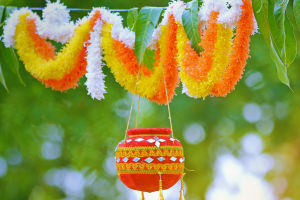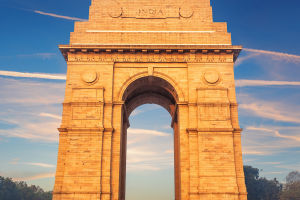Janmashtami, observed annually to mark the birth of Lord Krishna, the eighth avatar of Vishnu, is one of the most spiritually significant Hindu festivals.
It honors the moment Krishna descended to restore dharma, defeat evil, and teach humanity the essence of devotion and righteous action. His life, filled with miracles and wisdom, is remembered not just with rituals, but with immense love and reverence.
The Story Behind Janmashtami
According to Hindu scriptures, Krishna was born over 5,000 years ago on the eighth day (Ashtami) of the dark fortnight (Krishna Paksha) in the month of Bhadrapada. His birth was no ordinary event—it occurred in a prison cell in Mathura, under the tyranny of his uncle Kansa, who had imprisoned his parents, Devaki and Vasudeva. A prophecy had foretold that Devaki’s eighth son would bring about Kansa’s downfall, prompting the king to target all her children.
At midnight, Krishna was born and miraculously saved. Vasudeva carried the infant across the rain-swollen Yamuna River to Gokul, where Krishna grew up with Yashoda and Nanda. His childhood stories—stealing butter, dancing with the gopis, and lifting Govardhan Hill—became legendary, symbolizing joy, protection, and divine love.
Why Do Devotees Fast on Janmashtami?
Fasting on Janmashtami is a powerful spiritual practice observed by millions. But why do people choose to fast on this day?
1. Purification of the Mind and Body: Fasting is seen as a way to cleanse the body and control the senses, making it easier to focus on devotion.
2. An Offering of Devotion: By abstaining from food, devotees express surrender, humility, and love for Krishna, offering their discipline as a gift.
3. Alignment with Krishna’s Birth Hour: Since Krishna was born at midnight, devotees fast until that sacred moment to welcome him with a pure heart.
Types of Fasting Observed
There are several ways people fast on Janmashtami, depending on personal and regional traditions:
• Nirjala Fast: A complete fast without food or water, undertaken by deeply committed devotees.
• Phalahar Fast: Consumption of fruits, milk, and water during the day. Grains, rice, salt, and lentils are avoided.
• Ekadashi-Style Fast: Similar to the fasts kept on Ekadashi, including sattvic foods like sabudana, potatoes, and milk sweets.
Most devotees break their fast at midnight, after the ceremonial birth of Lord Krishna.
Midnight Celebrations and Rituals
As the clock strikes twelve, temples and homes across India erupt in joy. Idols of baby Krishna are bathed in milk, honey, and ghee (panchamrit), dressed in silk, and placed in decorated cradles. Devotees chant mantras, sing bhajans, and read verses from the Bhagavad Gita and Bhagavata Purana. The moment is not just about ritual—it's about feeling Krishna’s presence in one’s life.
Spiritual Meaning Behind the Fast
Fasting is not merely physical restraint; it is a means to rise above material needs and experience divine joy. On Janmashtami, when devotees focus their minds on Krishna, chant his name, and avoid worldly distractions, they symbolically recreate the atmosphere of Krishna’s birth—overcoming darkness with light, and fear with faith.
Conclusion: A Festival of Faith and Focus
Janmashtami 2025, falling on August 15, offers not just a celebration, but a spiritual retreat. Fasting connects the body with the soul, stories connect the heart with divinity, and midnight prayers connect time with eternity. As you observe the fast or narrate Krishna’s leelas to loved ones, remember—the essence of Janmashtami is not in denying yourself, but in devoting yourself completely.


